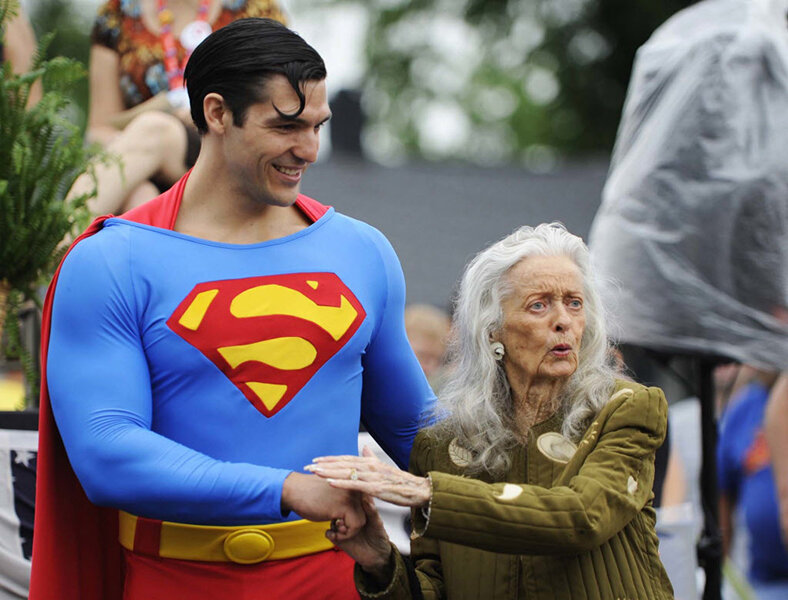Remembering Noel Neill, the first to portray Lois Lane on screen
Loading...
Actress Noel Neill, who has died, was the first actress to portray the Superman character Lois Lane in movies.
In the early days of Superman, the character of Lois Lane represented a portrait of an ambitious professional woman that was relatively rare in the popular media. But the character didn't evolve, say critics.
Ms. Neill starred opposite actor George Reeves and Kirk Alyn, who both played Superman. Neill appeared as Lois in “Superman,” a 1948 film serial, among other movies. She then starred in the TV series “Adventures of Superman,” which debuted in 1952, after the original Lois, actress Phyllis Coates, departed the project.
Neill also appeared in Superman projects such as the 1978 Christopher Reeve “Superman” film, in which she portrayed Lois’s mother, Ella, and the 2006 movie “Superman Returns,” which stars Brandon Routh and in which she portrays Gertrude Vanderworth, Lex Luthor’s wife.
Besides her work appearing as Lois, Neill also starred in the films “An American in Paris,” “The Greatest Show on Earth,” and “Gentlemen Prefer Blondes.”
Reporter Lois is one of the most famous characters in the Superman cast and has also been played by actresses including Margot Kidder (in the movies starring Mr. Reeve), Teri Hatcher (in the 1990s TV series “Lois & Clark”), Kate Bosworth (in “Superman Returns”), and most recently, Amy Adams, who appeared in the 2013 film “Man of Steel” and this year’s “Batman v Superman.” She’s set to reprise the role in an upcoming “Justice League” film.
Tim Hanley, author of “Investigating Lois Lane: The Turbulent History of the Daily Planet’s Ace Reporter,” said in an interview with The Christian Science Monitor that many female journalists he spoke to said they enjoyed Lois’s character.
“In the beginning, the relentless ambition of Lois – her striving – wasn’t something you saw elsewhere in popular media of the late 1930s,” Mr. Hanley said. “She became a role model for women in journalism who picked up on her drive.”
Her portrayal didn’t always match up with the attitude of the times, however, says Hanley.
“In the late 1970s and the 1980s, when you started to see a rise in women in TV news, she’s in a 1950-style rivalry with Lana Lang and fighting over Superman,” he said. “They’re post-women’s lib at that time, but she’s still trapped in these antiquated stories.”
However, in her portrayals, Lois often stands out from other women characters in the comics world, Hanley says.
“She escapes the trap of many female comic book characters, including superheroes, who are known for their beauty and physical shape and have skimpy outfits,” he said. “While she’s pretty, she wears normal clothes. She’s in love with Superman, but there’s not a lot of romantic or sexual attraction directed at her. She gets to be her own character without the male gaze thing that can come with a lot of superhero characters.”








